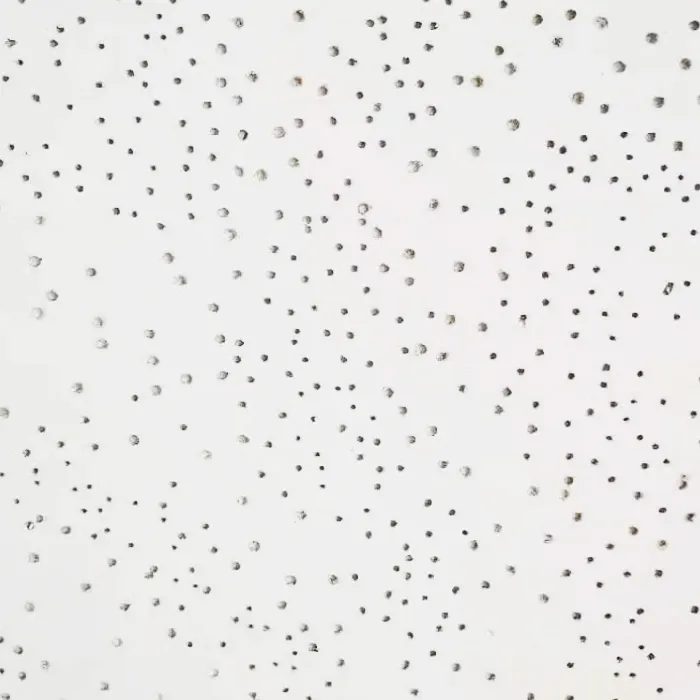Dec . 29, 2024 14:42 Back to list
Benefits of Choosing PVC Laminated False Ceilings for Modern Interiors
Understanding PVC Laminated False Ceilings
In recent years, the construction and interior design industry has witnessed a shift toward innovative materials that not only enhance aesthetics but also improve functionality. Among these materials, PVC laminated false ceilings have emerged as a popular choice for both residential and commercial spaces. This article explores the characteristics, benefits, and applications of PVC laminated false ceilings, as well as considerations for installation and maintenance.
What is a PVC Laminated False Ceiling?
A PVC laminated false ceiling is a suspended ceiling made from polyvinyl chloride (PVC) sheets that are laminated for protection and enhanced aesthetics. These ceilings typically consist of lightweight panels that are easy to install and available in a variety of colors, patterns, and finishes. The laminated surface provides a glossy appearance, contributing to a modern and sophisticated ambiance.
Key Benefits of PVC Laminated False Ceilings
1. Cost-Effectiveness PVC laminated ceilings are generally more affordable than traditional ceiling materials such as gypsum or wood. This cost-effectiveness makes them an attractive option for home and business owners looking to remodel without breaking the bank.
2. Water Resistance One of the standout features of PVC is its resistance to moisture. This property makes PVC laminated ceilings ideal for areas prone to humidity, such as kitchens and bathrooms, where traditional materials might warp or deteriorate.
3. Easy Maintenance Maintaining a PVC laminated false ceiling is straightforward. Typically, a simple wipe with a damp cloth is sufficient to remove dust and stains, making it a practical option for busy environments.
4. Variety of Designs The aesthetic appeal of PVC laminated ceilings is greatly enhanced by the wide range of designs available. From vibrant colors to elegant wood-like finishes, these ceilings can cater to diverse design preferences and themes.
5. Fire Retardant Properties Many PVC laminated panels come with fire retardant treatments, enhancing safety in residential and commercial settings. This feature is particularly important for public spaces where fire safety regulations are stringent.
Installation Process
pvc laminated false ceiling

The installation of PVC laminated false ceilings is a relatively straightforward process, often carried out by professionals. The process typically involves
1. Planning Determining the layout and design of the ceiling, including any lighting or ventilation considerations. 2. Framework Setup A framework is constructed using metal grid or wooden battens to support the PVC panels.
3. Panel Installation PVC panels are then fixed onto the framework, ensuring a seamless appearance. Consideration should be given to adding insulation if necessary, especially in areas with extreme temperatures.
4. Finishing Touches After the panels are in place, finishing touches such as edge trims and lighting fixtures are installed to complete the look.
Applications
PVC laminated false ceilings find applications in various settings
- Residential Spaces Living rooms, bedrooms, kitchens, and bathrooms benefit from the aesthetic appeal and practicality of PVC ceilings.
- Commercial Spaces Offices, restaurants, and retail outlets utilize PVC ceilings to create attractive interiors that are also functional.
- Institutional Buildings Schools, hospitals, and other institutions appreciate the durability and ease of cleaning associated with PVC laminated ceilings.
Conclusion
PVC laminated false ceilings represent a modern solution for those seeking an attractive, durable, and low-maintenance ceiling option. With their numerous benefits and a wide range of design possibilities, they cater to diverse needs and preferences in both residential and commercial environments. As the demand for stylish and functional interior solutions continues to grow, PVC laminated false ceilings will undoubtedly remain a popular choice among architects, builders, and homeowners alike.
-
Quality Ceiling Trap Doors & Access Panels | Easy & Secure AccessNewsAug.30,2025
-
Durable Ceiling T Grid Systems | Easy InstallationNewsAug.29,2025
-
PVC Gypsum Ceiling: Durable, Laminated Tiles for Modern SpacesNewsAug.28,2025
-
Pvc Gypsum Ceiling Is DurableNewsAug.21,2025
-
Mineral Fiber Board Is DurableNewsAug.21,2025
-
Ceiling Tile Clip Reusable DesignNewsAug.21,2025







